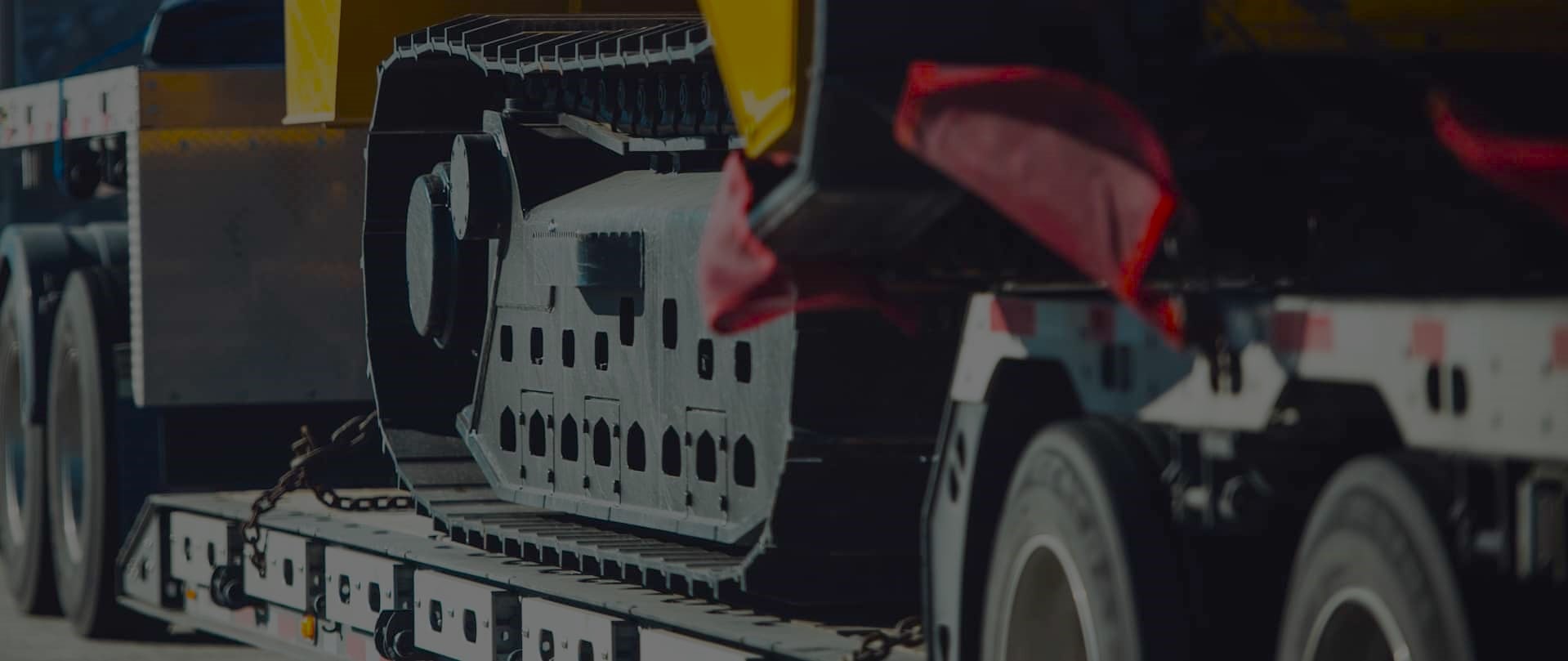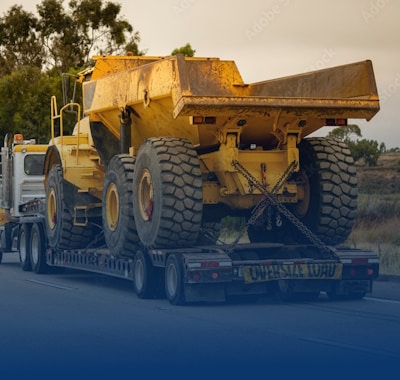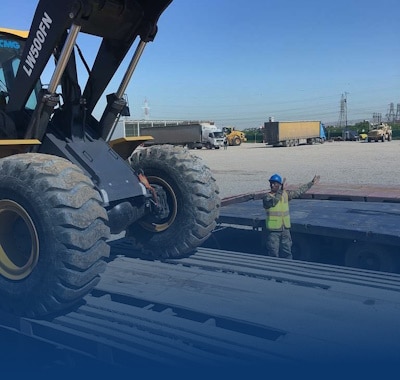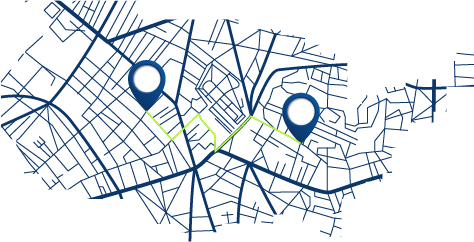The Benefits of Using Drones in Heavy Haul Route Surveys
Freedom Heavy Haul can offer expedited Pickup and Delivery for any size shipment anywhere in the USA. Contact us today for No Hassle, No Pressure Pricing.
Drone technology has revolutionized the way we approach heavy haul route surveys. By leveraging unmanned aerial vehicles (UAVs), we can now gather precise data faster and more safely than ever before. This innovation is transforming the construction and equipment transportation industries, offering a smarter solution for route planning and management.
Traditional survey methods often involve significant time, cost, and risk. With drones, we can access hard-to-reach areas and collect detailed information in a fraction of the time. This not only reduces expenses but also minimizes human exposure to potential hazards. Accuracy is another key advantage, as high-resolution images and mapping software provide reliable data for decision-making.
Recent studies highlight measurable improvements in safety and efficiency when using drones for heavy equipment operations. By integrating this technology into existing workflows, we enhance project planning and reduce risks. This approach ensures better route optimization and smoother operations overall.
As drone technology continues to evolve, its role in heavy haul surveys becomes increasingly vital. For more insights, explore how drones are reshaping the industry. This method is not just a trend—it’s a game-changer for modern transportation management.
Introduction to Drone Technology in Heavy Haul Operations
Unmanned aerial vehicles (UAVs) are becoming indispensable tools in construction and transportation. These devices offer advanced capabilities, making them ideal for complex tasks like site inspections and route planning. By leveraging drone technology, we can gather precise data quickly and safely, transforming how we manage heavy equipment logistics.
Overview of UAV and Drone Surveying
Drone surveying involves capturing aerial images and using photogrammetry to create detailed maps. This method allows us to analyze terrain, surface conditions, and site features with high accuracy. UAVs equipped with advanced cameras and mapping software provide real-time insights, streamlining decision-making processes.
Relevance to Heavy Equipment and Route Planning
In heavy equipment operations, drones play a crucial role in route planning and project management. They help identify potential risks, optimize workflows, and ensure safe transportation of oversized loads. By using drones, we reduce costs and improve efficiency, making them a valuable tool for modern construction projects.
Enhanced Safety Measures with Drone Surveys
Safety remains a top priority in construction and transportation, and drones are proving to be a game-changer. By deploying unmanned aerial vehicles, we can significantly reduce risks in hazardous environments. This innovative approach ensures safer workflows while maintaining high accuracy and efficiency.
Minimizing On-Site Risks
Drone surveys minimize on-site risks by eliminating the need for human surveyors to access dangerous areas. Hazardous site conditions, such as unstable terrain or active worksites, are bypassed through aerial inspections. This method not only protects teams but also ensures uninterrupted data collection.
Automated flight surveys further enhance safety by reducing human exposure to potential hazards. Recent studies show a notable decrease in accident rates when drones are used for site inspections. This makes them an invaluable tool for modern construction and transportation projects.
Remote Data Collection Advantages
Remote data collection with drones offers numerous safety benefits. Teams can gather detailed information without physically entering risky zones. This approach improves safety protocols and ensures consistent workflow efficiency.
High-resolution images and mapping software provide real-time insights, enabling better decision-making. Project managers can rely on precise data to optimize routes and minimize risks. This combination of safety and accuracy makes drones essential for heavy equipment operations.
| Safety Benefit | Description |
|---|---|
| Reduced Human Exposure | Teams avoid hazardous areas, lowering accident risks. |
| Automated Surveys | Flight plans ensure consistent data collection without manual intervention. |
| Real-Time Insights | High-resolution images provide immediate feedback for decision-making. |
| Cost Efficiency | Fewer resources are needed for site inspections, reducing overall costs. |
Boosting Efficiency in Survey Processes
Efficiency in survey processes has reached new heights with the integration of drone technology. By leveraging unmanned aerial vehicles, we can now capture and process data at unprecedented speeds. This innovation is transforming how we approach construction and transportation projects, ensuring faster turnaround times and improved accuracy.
Rapid Data Capture and Processing
Drones excel in capturing high-resolution images and mapping large areas quickly. Advanced software processes this information in real-time, providing detailed insights for project managers. This method eliminates delays caused by traditional survey techniques, allowing teams to make informed decisions faster.
Photogrammetry, a key technique used in drone surveys, creates precise 3D models of surfaces and features. This approach ensures that every detail is captured, enhancing the overall quality of the survey. As one expert noted,
“Drone-based photogrammetry is revolutionizing how we gather and analyze data in the field.”
Reducing Downtime on Site
Automation plays a crucial role in minimizing downtime during survey operations. Drones can cover vast areas in a single flight, reducing the need for manual inspections. This not only saves time but also lowers costs associated with prolonged site visits.
Frequent surveys are now possible, enabling teams to monitor site conditions regularly. This proactive approach helps identify potential risks early, ensuring smoother workflows. For example, efficient route planning for heavy equipment transportation can be enhanced using advanced mapping tools.
| Efficiency Benefit | Description |
|---|---|
| Rapid Data Capture | High-speed image collection reduces survey duration. |
| Automated Processing | Real-time software analysis speeds up decision-making. |
| Reduced Downtime | Minimized manual inspections save time and resources. |
| Frequent Surveys | Regular monitoring ensures timely risk identification. |
Cost Savings and Economic Benefits
Adopting drone surveys transforms cost management in construction and transportation. By leveraging this advanced technology, we significantly reduce expenses while improving project outcomes. This approach not only saves time but also enhances overall accuracy, making it a smart investment for modern industries.
Reducing Labor and Equipment Expenses
Drone surveys minimize the need for manual labor and heavy equipment on-site. Teams can gather detailed data remotely, eliminating the costs associated with traditional methods. This streamlined process reduces both labor and equipment expenses, freeing up resources for other critical tasks.
Accurate information ensures precise material estimates, lowering the risk of costly rework. By optimizing workflows, we cut down on field time and improve overall efficiency. This proactive approach helps avoid delays, keeping projects on schedule and within budget.
Industry examples highlight the economic benefits of drone integration. For instance, a recent construction project reported a 30% reduction in survey costs after adopting drone technology. These savings demonstrate the tangible advantages of this innovative method.
We are committed to providing cost-effective, reliable solutions for heavy haul projects. By integrating drone surveys into our workflows, we ensure better management and improved outcomes. Explore how AI complements these efforts to further enhance efficiency and cost savings.
How Drone Imaging and Photogrammetry Work
Drone imaging and photogrammetry have become essential tools for creating detailed 3D models in modern surveying. These technologies enable us to capture precise data from the air, transforming how we analyze and map complex sites. By combining advanced cameras and software, we generate accurate representations of terrain and structures.
From Aerial Photos to 3D Models
Creating 3D models starts with capturing high-resolution aerial images during a drone flight. Overlapping photos are stitched together using photogrammetry software. This process ensures every surface and feature is accurately represented. The result is a detailed model that aids in project planning and decision-making.
Ground control points (GCPs) enhance accuracy by providing reference markers for the software. These markers align the aerial data with real-world coordinates. As one expert noted,
“GCPs are critical for achieving survey-grade precision in drone mapping.”
Understanding Photogrammetry Basics
Photogrammetry is the science of extracting measurements from images. It relies on overlapping photos to calculate distances and create 3D models. This method is widely used in construction, mining, and transportation industries. Its ability to capture fine details makes it a valuable tool for site analysis.
Advanced software processes the images, identifying key features and generating accurate maps. This approach reduces the need for manual measurements, saving time and resources. Photogrammetry also supports frequent inspections, ensuring conditions are monitored regularly.
RTK Versus PPK Techniques
Real-Time Kinematic (RTK) and Post-Processed Kinematic (PPK) are two GNSS technologies used in drone surveying. RTK provides real-time corrections during the flight, ensuring immediate accuracy. PPK, on the other hand, applies corrections after the flight, offering flexibility in challenging environments.
Both methods enhance data integrity, but PPK is often preferred for its reliability in areas with poor signal reception. By combining these technologies with photogrammetry, we achieve survey-grade accuracy in every project.
The Benefits of Using Drones in Heavy Haul Route Surveys
Survey-grade accuracy is now easier with advanced drone technology. By leveraging precise mapping tools and techniques, we ensure reliable data for every project. This approach minimizes errors and enhances decision-making in construction and transportation.
Technological Factors Ensuring Precision
Geo-tagging and RTK/PPK corrections are critical for achieving high accuracy. These methods align aerial images with real-world coordinates, reducing risk of miscalculations. Proper ground control points (GCPs) further enhance quality by providing reference markers.
Advanced software processes data in real-time, ensuring consistent accuracy. This eliminates delays caused by traditional methods, allowing teams to focus on management and workflow optimization.
Comparative Examples and Measurable Benefits
Traditional survey methods often involve manual measurements, which are time-consuming and prone to errors. Drones, however, capture detailed information quickly, reducing cost and improving efficiency.
For example, a recent construction project reported a 40% reduction in error margins after adopting drone technology. This demonstrates the tangible benefits of this innovative method.
| Traditional Survey | Drone Survey |
|---|---|
| Manual measurements | Automated data capture |
| Higher error margins | Reduced error rates |
| Time-consuming | Rapid data processing |
| Higher costs | Cost-effective solution |
By integrating drone surveying into our workflows, we ensure top-tier accuracy and reliability. This approach not only improves project outcomes but also enhances safety and efficiency.
Ensuring Accuracy with Ground Control and Smart GCPs
Precision in drone surveys relies heavily on ground control points (GCPs) for accurate mapping. These markers align aerial imagery with real-world coordinates, ensuring reliable data for every project. By integrating advanced GCP technology, we enhance both efficiency and accuracy in surveying workflows.
The Role of Ground Control Points
Ground control points are critical for achieving survey-grade precision. Placed strategically across a site, GCPs act as reference markers for aligning drone-captured images. This process reduces errors and ensures data integrity, making it essential for construction and transportation projects.
Traditional GCPs require manual placement and measurement, which can be time-consuming. Smart GCPs, like AeroPoints, automate this process, reducing labor and improving accuracy. Continuous GPS data collection ensures consistent alignment, even in challenging environments.
Advantages of Smart GCP Technology
Smart GCPs offer significant benefits over traditional methods. They eliminate the need for manual setup, saving time and reducing costs. Advanced features like continuous GPS tracking enhance data precision, ensuring reliable results for every survey.
Integration with drone platforms simplifies the mapping process. Teams can deploy smart GCPs quickly, enabling faster data collection and processing. This approach improves workflow efficiency, allowing project managers to make informed decisions promptly.
| Traditional GCPs | Smart GCPs |
|---|---|
| Manual placement and measurement | Automated setup and GPS tracking |
| Time-consuming process | Rapid deployment and data collection |
| Higher risk of errors | Enhanced precision and reliability |
| Increased labor costs | Reduced labor and operational expenses |
By leveraging smart GCP technology, we ensure every survey is tied to reliable, real-world coordinates. This approach not only improves accuracy but also enhances safety and efficiency in heavy equipment operations. For more insights on route safety, explore our guide on heavy equipment hauling with route safety.
Enhancing Project Management and Decision Making
Real-time data integration is reshaping how we manage construction and transportation projects. By leveraging drone technology, we gather actionable insights that drive efficiency and success. This approach ensures that every decision is based on accurate, up-to-date information.
Real-Time Data Integration
Drone surveys provide immediate access to critical datum, enabling on-site and off-site teams to make informed decisions. High-resolution images and mapping software deliver precise details about site conditions. This eliminates delays caused by traditional methods, ensuring smoother workflows.
Cloud-based platforms integrate this data, allowing seamless sharing across teams. Project managers can monitor progress and address issues promptly. As one expert noted,
“Real-time data integration is the backbone of modern project management, ensuring transparency and efficiency.”
Facilitating Collaboration Across Teams
Improved information sharing enhances communication among contractors, designers, and stakeholders. Cloud-based platforms enable real-time updates, ensuring everyone stays aligned. This collaborative approach reduces misunderstandings and accelerates project timelines.
Having up-to-date site details allows teams to resolve emerging issues quickly. For example, efficient route planning for heavy equipment transportation becomes more manageable. This proactive strategy minimizes downtime and keeps projects on track.
| Benefit | Description |
|---|---|
| Real-Time Updates | Immediate access to data ensures timely decision-making. |
| Enhanced Collaboration | Cloud platforms improve communication across teams. |
| Reduced Downtime | Quick issue resolution keeps projects on schedule. |
| Improved Accuracy | Precise datum minimizes errors and rework. |
We are committed to delivering actionable insights that directly impact project outcomes. By integrating drone technology and cloud-based solutions, we ensure efficiency, accuracy, and collaboration in every construction and transportation endeavor.
Case Studies: Drone Use in Construction and Mining
Innovative drone applications are transforming industries like construction and mining. By integrating this advanced technology, companies are achieving remarkable improvements in safety, efficiency, and cost management. Real-world examples demonstrate how drones are reshaping workflows and delivering measurable benefits.
Civil Construction Success Stories
In civil construction, drones are streamlining project management and reducing risks. One notable example involves a large infrastructure project where drones were used for site inspections. The team captured high-resolution datum, enabling precise planning and reducing manual labor by 40%.
Another case highlights how drones improved route planning for equipment transportation. By mapping challenging terrains, the team optimized logistics, saving both time and resources. As one project manager noted,
“Drones have become an essential tool for ensuring accuracy and efficiency in our operations.”
Mining and Aggregates Industry Benefits
Mining operations are also reaping the rewards of drone technology. Drones are being used for inventory management, reducing the need for manual stockpile measurements. This approach not only saves time but also enhances accuracy, minimizing costly errors.
Safety is another critical area where drones are making an impact. By conducting aerial inspections of hazardous sites, companies are reducing human exposure to risks. For example, a mining company reported a 50% reduction in safety incidents after adopting drone survey methods.
| Industry | Benefit | Outcome |
|---|---|---|
| Construction | Improved site inspections | 40% reduction in manual labor |
| Mining | Enhanced inventory management | Improved accuracy and cost savings |
| Both | Increased safety | 50% fewer incidents |
These examples illustrate the transformative power of drones in construction and mining. By adopting this technology, companies are achieving significant improvements in efficiency, safety, and cost management. For more insights on optimizing heavy equipment logistics, explore our guide on tracked drill transportation.
Final Thoughts on Advancing Drone Survey Technology
Advancements in drone surveying are reshaping heavy equipment logistics. By leveraging drone technology, we achieve unmatched accuracy, efficiency, and safety in construction and transportation projects. From photogrammetry to smart GCPs, these innovations ensure reliable datum for better decision-making.
Cost savings are another significant benefit. Drone surveys reduce labor and equipment expenses while minimizing downtime. Improved safety protocols protect teams, and real-time datum integration enhances project management.
We encourage adopting these tools for modern heavy civil operations. By integrating drone technology, we ensure smoother workflows and optimized route planning. For example, our crane transport services benefit from precise site analysis and efficient logistics.
As leaders in technology-driven solutions, we remain committed to delivering excellence. Drone surveys are not just a trend—they’re the future of heavy equipment operations.







